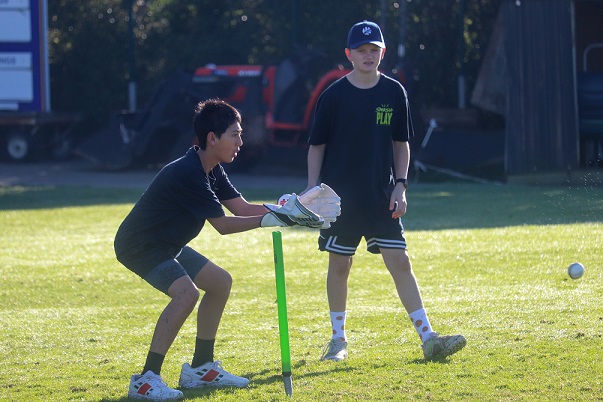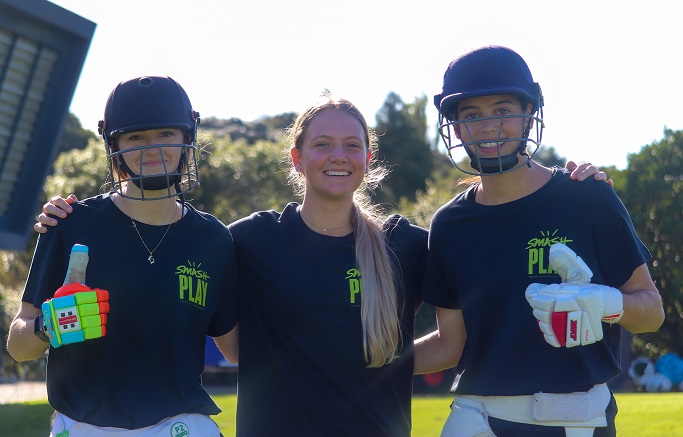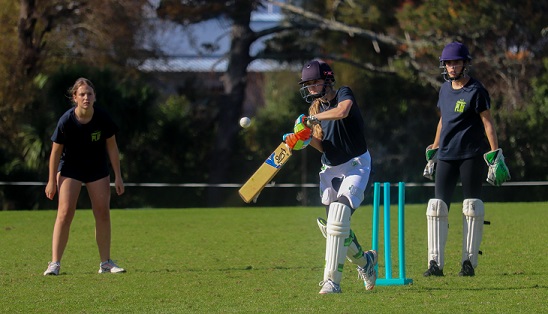Session Design Principles

Associate Professor Ian Renshaw
School of Exercise & Nutrition Sciences
Faculty of Health
Queensland University of Technology
Australia
Download PDF of 'Session Design Principles'
I was delighted to be asked by New Zealand Cricket (NZC) to help build on the ground-breaking Smash Play junior-tamariki approach by supporting its evolution into the youth space.
This new approach is timely given that our game is coming under increasing pressure from less traditional sports, who are engaging young people with new and exciting ways to play and be active. It is therefore essential that our young people are introduced to and learn to play the game through experiences that meet their individual needs. This happens via building on six key principles developed by fusing the natural ways that young people have learned to play cricket with contemporary ideas of skill learning.
- Maximising time for players
- Sense of achievement
- Allowing exploration
- Facilitating self-challenges
- Non-linear nature of skill learning
- Allowing for individual differences
Historically, youngsters learned how to be a cricketer by playing games with their mates. Whilst games were always highly competitive, the central goal was to have fun. A key strength of these informal ‘pick-up’ games was that they could be adapted to the space available and enabled them to be played anywhere and for hours and hours. Numbers in games were generally low, with mixes of age groups and abilities. This meant that everyone was always involved with lots of ‘turns’ because maximal participation for everyone playing in the game was essential. Rules were individually adapted to match the ability of each player so no one player could dominate.
Another, advantage of these games was that the absence of adults to run the games meant that youngsters were able to try out different strategies and explore what might work and what didn’t. Because players were constantly challenged by rule changes this also promoted creativity and allowed players to find ways that worked for them. The Smash Play philosophy is designed to recreate all these advantages for young New Zealanders.
Unfortunately, the natural way of learning, as highlighted above, has been superseded by formal programmes where youngsters are ‘taught’ to play cricket rather than learning how to play. Significantly practice is mainly confined to the nets, rather than learning via playing games.
Whilst nets allow teachers and coaches to cater for whole squads of players, making sure that every player gets a bat and a bowl, for me, there are several key limitations. First, the organisation and management of the net takes up the coaches’ time, with coaches being practice managers rather than coaches.
From my experience, this means that little actual coaching taking place. When the coach does get the opportunity to coach, the emphasis is on trying to ensure that players develop ‘perfect’ technique, with most interactions between coaches and players being focused on correcting errors
Cricket is not alone. For too long, many sports have over emphasised teaching techniques through repetitive practice at the expense of learning to play by playing games. In essence, sports copied the school system where drilling skills to develop ‘the basics’ is often the norm. Sadly, we have seen the effect of this, for me, flawed approach within PE and sports with a consequence being the fall in participation rates and disengagement as young people move through the ‘system’. Clearly, current approaches are not meeting the needs of young people.

Fortunately, NZC had come to the same conclusions and decided that the way the game was being delivered and perceived needed to change. The NZC Smash Play approach to skill learning has taken on board the philosophy of backyard cricket and combined it with contemporary ideas in skill acquisition. This is a Constraint-Led Approach to skill acquisition.
Play is central to the philosophy of Smash Play youth- rangatahi. It is an essential foundation for all aspects of our lives and gives the chance for players to learn the skills of life (and cricket) in a psychologically safe space. The beauty of playing is that it is undertaken voluntarily, and is consequently free from over prescriptive instructions, making it exciting and capturing the imagination. When players are playing, you can hear and feel the BUZZ.

In backyard games of cricket, batters always face bowlers. I believe that this is a fundamental requirement when learning to play cricket. While this might seem obvious, much of cricket coaching actually separates the learning of batting and bowling. For example, batters face ‘throw downs’, ‘sidearms’ or ‘bowling machines’. Bowlers often bowl at targets placed on the pitch or attached to the stumps, rather than bowl to batters.
For me, this approach is fundamentally flawed as it stops batters from learning to pick up the key cues that ‘tell’ them what type of ball is being bowled. To learn to hit the ball, batters first of all need to know where the ball will land and how it will behave once it has landed. Knowing can, therefore, only come from facing bowlers. Similarly, bowler’s need to learn where to bowl to batters and what type of ball they should bowl. This knowledge can only be acquired by bowling to batters in the context of the current state of the game.
Many of the ideas underpinning the Smash Play approach sit neatly with the key principles of a Constraint-Led Approach (CLA). (You can find out more about this approach here - The Constraints Collective). Consequently, in line with the NZC Coach Approach, Smash Play was built based on combining CLA and the backyard game philosophy with the aim of ensuring that players learn to 'Play the Kiwi Way'. Our goal is to build on the foundational skills and mindsets children developed in Smash Play junior-tamariki, enabling them to develop skillful adaptable players, while at the same time building better people.

As a result, in Smash Play youth-rangatahi you will see carefully designed games that follow the philosophy and learning principles outlined earlier. These games will allow young people the freedom to be playful and consequently be ‘romanced’ by cricket and ultimately hook them on our great game for life.
As an integral contributor to the programme, I am strongly invested in seeing it make a significant contribution to the future of cricket in New Zealand. To create a positive framework to learn to play cricket for the participants, coaches, parents, their whānau and the wider community.












